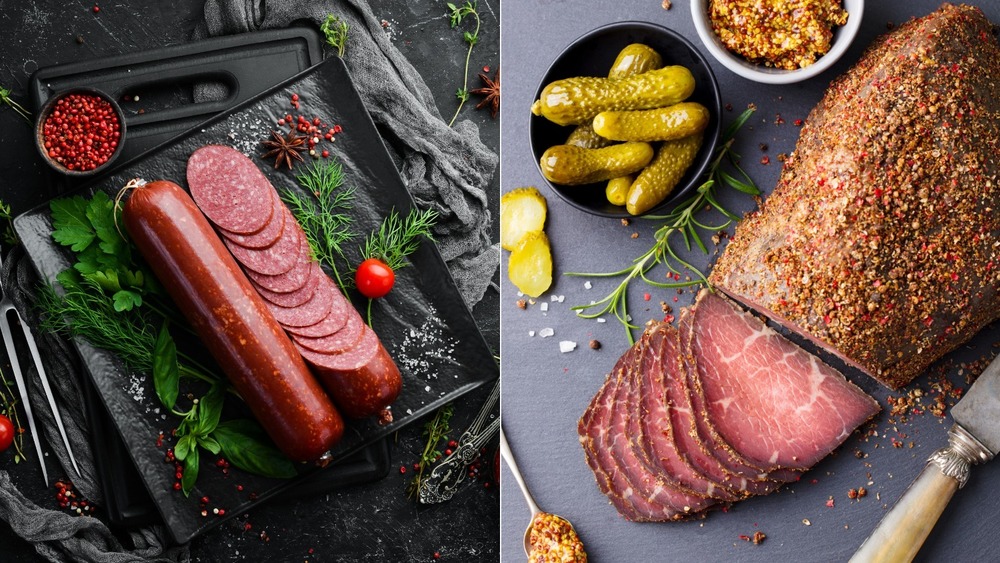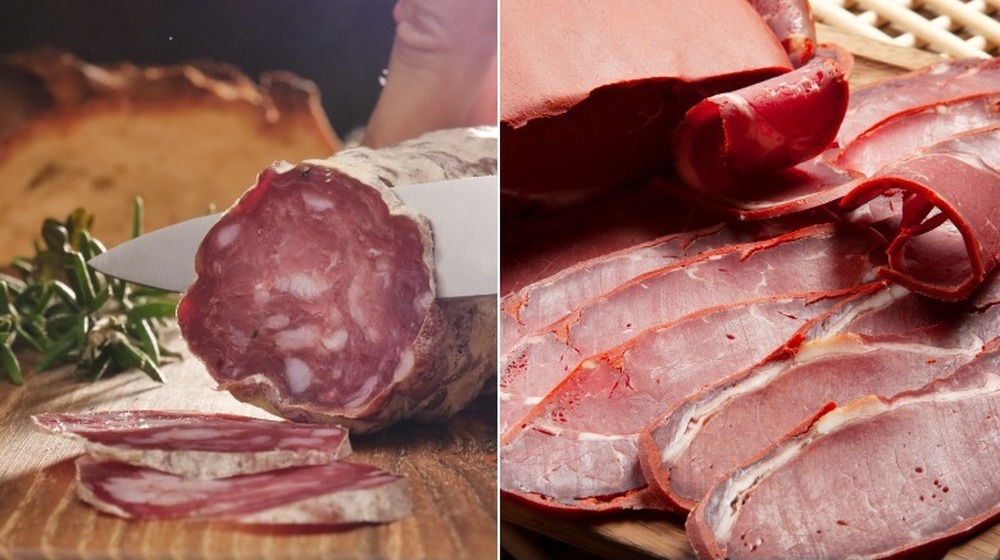The Real Difference Between Salami And Pastrami
Typically, when many think about hosting a small get-together or having a somewhat elevated movie night at home their mind goes to the picture-perfect charcuterie board (with some wine on the side, of course). According to Cork, charcuterie boards have been around for a long time – the art of smoking meats has been around for over 6,000 years. Eat Cured Meat states that there are two types of charcuterie philosophies: the classic French style and a more modern style.
In the French style, you can find things like pates, rillettes, boudin, and salami. The modern approach is a bit more relaxed, and you can find a mix of jams, veggies, bread, cured meats, and cheeses. Something many often struggle with is figuring out what meats are good for pairing, but more importantly, what the true differences are between meats like salami and pastrami. Do the differences lie in how they are made? Their taste? Where they are from?
Salami and pastrami are prepared differently
According to Yuppie Chef, the term "pastrami" comes from pastra, which is a Romanian word that means "to preserve." Eater states pastrami may come from one of two places: Romania or Turkey. Salami, on the other hand, is said to have Italian roots, according to Foods Guy. Pastrami is usually made with beef brisket but can also be made from other beef cuts like the deckle or the navel. Meanwhile, salami can be made using beef, venison, or pork.
To make salami, you'll need meat (your choice of beef, venison, or pork), salt, vinegar, white pepper, minced fat, herbs, garlic, and nitrate. To make pastrami, you need meat, garlic, coriander, black pepper, paprika, cloves, and mustard seeds. Pastrami is brined, coated with a mix of spices, and smoked. Making salami takes a somewhat different approach. Unlike pastrami, the salami mixture is stuffed in a casing, fermented, cured, and allowed to air dry. Whether you choose to have them on a charcuterie board or in a sandwich, salami and pastrami are equally delicious.

